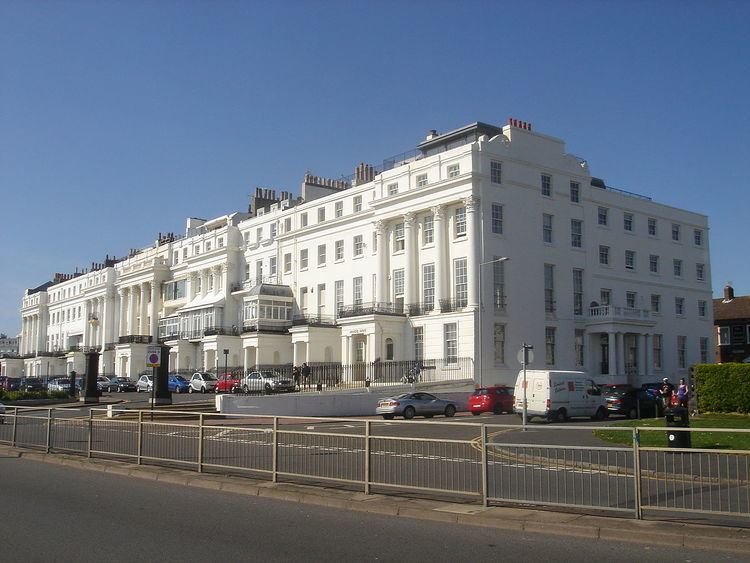Designated 13 October 1952 | Reference no. 1379917 | |
 | ||
Similar Adelaide Mansions, Adelaide Crescent, Fife House, Anthaeum - Hove, Percy and Wagner Almshouses | ||
Arundel Terrace is a road in Kemp Town, Brighton containing 1–13 Arundel Terrace, a row of Grade I listed buildings; numbers 12–13 are known as Arundel House. The buildings were built between 1824 and 1828 by Amon Wilds and Charles Busby.
Contents
Map of Arundel Terrace, Brighton BN2 1GA, UK
History
The Arundel Terrace houses were built for Thomas Read Kemp by Amon Wilds and Charles Busby between 1824 and 1828. All were constructed with Doric porches and ironwork balconies, although not all these remain, and the buildings were built facing the sea. They were built as part of a 106 house development plan for the Kemp Town area of Brighton.
Number 13 was the first building to be completed, and was used from 1826–1851 as the Bush Hotel, before being put up for sale by the building's owners, a Mr Creasy and Mr Wilkinson. The building was then converted into a private house, and then a girls' school. In 1910 it became a nursing home, and in the 1950 it was converted into a guest house. Number One was the home of doctor and financier Chevalier François de Rosaz; in his will, de Rosaz asked for the building to be converted into a Catholic asylum. Writer William Harrison Ainsworth lived at number 5 from 1853–1867; during his time living at 5 Arundel Terrace, he wrote the novels The Star Chamber, The Flitch of Bacon, The Spendthrift, The Life and Adventures of Mervyn Clitheroe, and Ovingdean Grange. 5 Arundel Terrace has a blue plaque outside, in commemoration of Ainsworth. West End theatre star Douglas Byng lived at Number 6 from the 1960s until his death in 1987; his ashes were scattered outside the buildings. Number 11 is listed as being put up for sale as an eleven bedroom private house in 1844, and number 7 was the home of J. Henson Infield, the proprietor of the Evening Argus and Sussex Daily News.
In 1952, the Terrace, including Arundel House (which is listed as being numbers 12–13 Arundel Terrace), became a Grade I listed building. In 2015, Arundel Terrace was included in plans made for a proposal for Brighton Promenade to become a UNESCO World Heritage Site.
